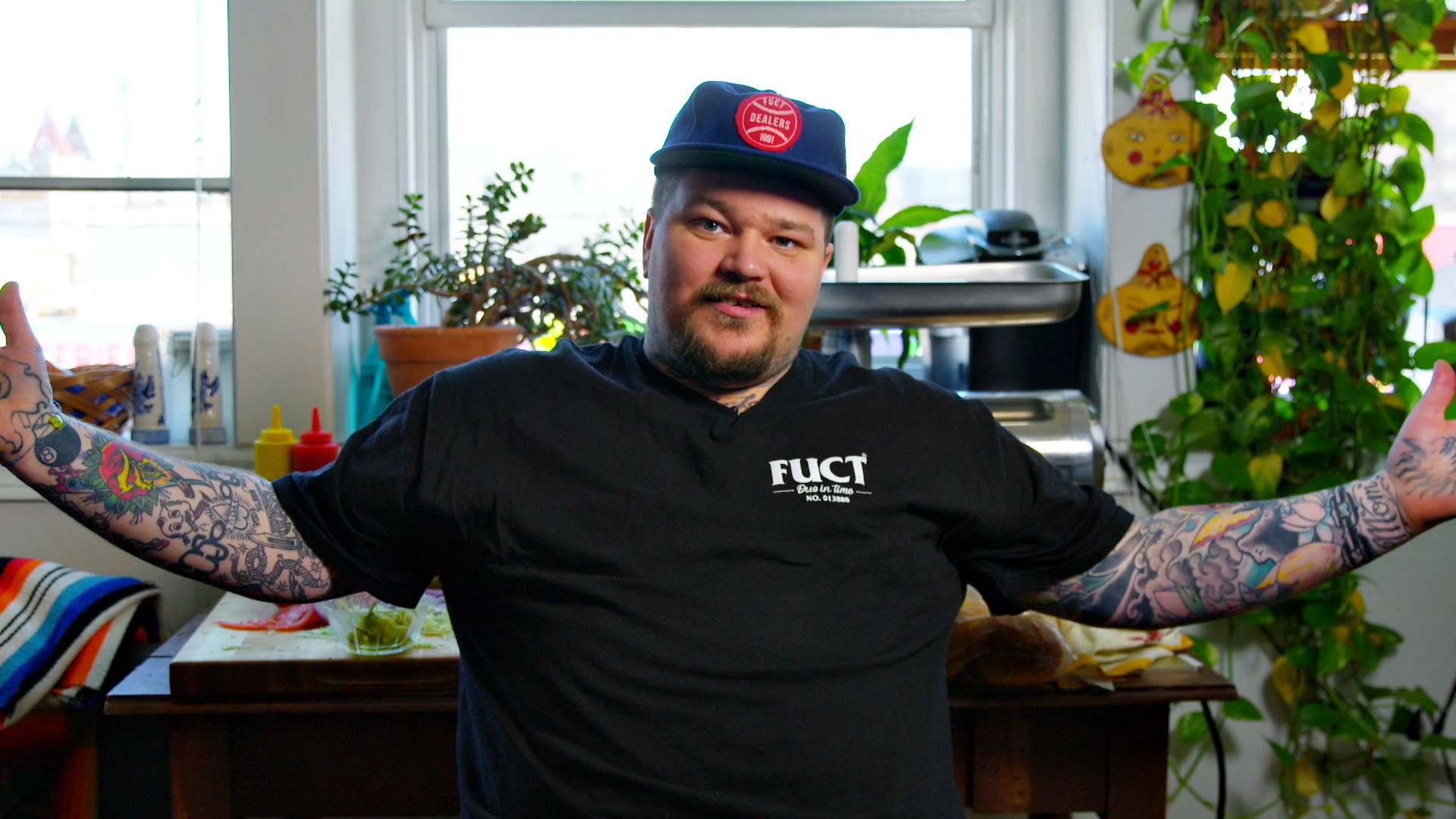Photo: Manny Rodriguez via Getty Images; screenshot via MUNCHIES
According to archaeologists, people have been fermenting for at least 9,200 years, and yet, not everyone's convinced. The process requires bacteria, which can result in funky sights and smells, squicking some people out. Still, it's safe to say that fermentation advocates have done a good job of turning people on to the magic of microbes: dry-aged beef is on high-end restaurant menus, and more and more people reap the flavor rewards of raw-milk cheese. You might hope this is a one-off, but this is just the most recent iteration of the "human cheese" idea. The V&A's version drew inspiration from a 2013 project called "Selfmade," in which bacteria was swabbed from Michael Pollan's belly button and artist Olafur Eliasson's tears. That freaky stuff has extended to other parts of the dairy world: a writer for Motherboard once used vaginal bacteria to make yogurt, and yes, actually ate it.The V&A's cheeses, however, aren't currently available for eating (whew), but they are ready for display. So sure, go ahead and buy a wedge of parm instead. That said, have you ever actually seen how sweaty, bare-armed cheesemakers go forearms-deep into vats of warm milk? Maybe all cheese is human cheese, after all.
You might hope this is a one-off, but this is just the most recent iteration of the "human cheese" idea. The V&A's version drew inspiration from a 2013 project called "Selfmade," in which bacteria was swabbed from Michael Pollan's belly button and artist Olafur Eliasson's tears. That freaky stuff has extended to other parts of the dairy world: a writer for Motherboard once used vaginal bacteria to make yogurt, and yes, actually ate it.The V&A's cheeses, however, aren't currently available for eating (whew), but they are ready for display. So sure, go ahead and buy a wedge of parm instead. That said, have you ever actually seen how sweaty, bare-armed cheesemakers go forearms-deep into vats of warm milk? Maybe all cheese is human cheese, after all.
Advertisement
So, you've conquered kombucha, and maybe you've even trained your nose and palate to accept the distinct foot-like quality of the dankest washed rind cheeses. I'd wager you've still got limits, though, and a new exhibit at London's Victoria & Albert Museum is here to push them. A "bold exhibition" called "FOOD: Bigger than the Plate" shows off not only a toilet made of cow manure and an edible water bottle, but also "human cheese." The latter is made—you guessed it—using human bacteria. And not just any human bacteria, but celebrity bacteria.Most cheese is made using starter cultures, bacteria that curdle the milk, and often, those starters come from a packet. For the V&A's five "human cheeses," however, that bacteria came from beloved celebrities, who had their skin swabbed in the name of science and truly funky cheese: from baker and food writer Ruby Tandoh to chef Heston Blumenthal to Blur's Alex James, a cheesemaker himself. (British rapper Professor Green and Suggs of the ska band Madness also contributed.) It's "like a celebrity selfie in cheese form," reads V&A's blog.The point, the museum says, is to challenge people's "squeamishness" and to enhance "our appreciation of the microbial world." That said, according to the Guardian, Blumenthal's samples did come from his "groin area."

